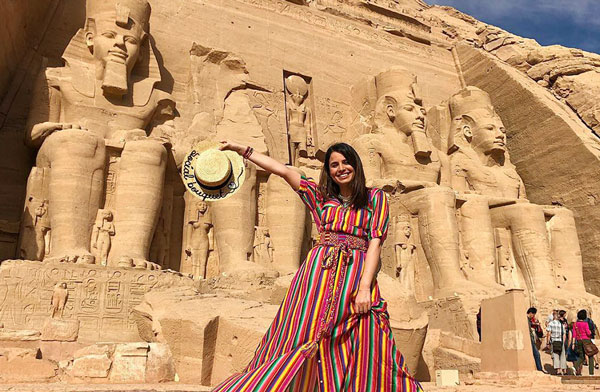
Karnak Temple: A Journey Through Egypt's Timeless Sanctuary
If you’ve ever dreamed of walking through the heart of ancient Egypt — not just seeing the Pyramids, but truly feeling the power of a civilization that once ruled the ancient world — then Karnak Temple is the place to be.
Located in the city of Luxor, Karnak is not just one temple; it’s a massive complex of sanctuaries, pylons, chapels, and obelisks. For over 2,000 years, pharaohs from different dynasties added to it, expanded it, and left their mark. Today, it stands as one of the largest and most awe-inspiring religious structures ever built.
A Living Record of Ancient Egypt
What makes Karnak so fascinating isn’t just its scale — although it’s massive. It’s the fact that it’s a living timeline. From the Middle Kingdom to the Ptolemaic era, you can trace the evolution of architecture, belief systems, and royal ambitions all in one place.
The core of the complex is dedicated to Amun-Ra, the chief god of the Theban Triad, but there are also areas honoring his wife Mut and their son Khonsu. As you move through the site, you’re walking through centuries of devotion and politics written in stone.
The Hypostyle Hall: A Forest of Stone
The most iconic part of Karnak is, without question, the Great Hypostyle Hall. Step into this space and you’ll find yourself surrounded by 134 massive columns, some reaching over 20 meters high. It’s like standing in a forest made entirely of stone.
The sunlight filters through the gaps above, casting shadows that shift as you walk. Every column is carved with hieroglyphs — names of kings, prayers, and stories of triumph. It’s a place that leaves you speechless, not just because of its size, but because of the feeling it gives you: that you’re standing somewhere important.
Pharaohs Who Left Their Mark
Many rulers contributed to Karnak’s grandeur, but some left more visible signs than others. Seti I and his son Ramses II are responsible for much of the Hypostyle Hall. Hatshepsut, Egypt’s powerful female pharaoh, added elegant obelisks and chapels. Thutmose III built the Festival Hall and several other key sections.
Each addition tells you something about that ruler — not just what they built, but what they wanted to be remembered for.
A Place of Ritual and Power
Karnak wasn’t just a place for tourists and priests. It was the religious center of Egypt for centuries. The annual Opet Festival started here, with processions carrying statues of the gods from Karnak to Luxor Temple along the Avenue of Sphinxes.
These festivals weren’t just religious—they were political. They reinforced the pharaoh’s divine connection and authority. Imagine the noise, the music, the crowds, the smell of incense and flowers—it wasn’t quiet, and it wasn’t empty. Karnak was alive.
Hidden Corners and Sacred Spaces
While the Hypostyle Hall and main sanctuary grab the attention, Karnak is filled with smaller, quieter corners that many visitors miss. There’s the Sacred Lake, where priests would purify themselves before rituals. There are the chapels tucked behind massive pylons. Some ruins feel half-forgotten, but when you look closer, you’ll find hidden inscriptions, weathered carvings, and signs of human hands from thousands of years ago.
Even the fallen stones have stories.
Karnak at Sunrise and Sunset
If you want to experience Karnak at its best, come early in the morning or right before sunset. The way the light hits the stone makes the carvings come alive. The shadows grow longer, the colors warmer, and the noise of the day softens.
It’s in these moments that you really feel the magic — when the temple feels less like a ruin and more like a place still holding onto its sacred energy.
Sound and Light Show: Karnak by Night
For those who want an entirely different experience, Karnak’s sound and light show offers a theatrical retelling of its history. You walk through the complex under the stars while voices and lights tell the story of the pharaohs, the gods, and the glory of ancient Thebes.
Some people find it a bit dramatic, others find it moving — either way, it’s a unique way to see the site.
Planning Your Visit
Karnak Temple is located on the east bank of the Nile in Luxor, and it’s easy to reach from most hotels in the area. Most guided tours include it as a must-see, but if you can, take your time and explore it slowly.
Wear comfortable shoes, bring water, and give yourself space to just stand and absorb it. You don’t need to rush. Karnak has waited thousands of years — it can wait a little longer for you to take it all in.
Final Thoughts: Why Karnak Still Matters
Karnak Temple isn’t just an archaeological site — it’s a connection to something bigger than ourselves. It reminds us that people, thousands of years ago, believed in beauty, order, ritual, and the divine.
And somehow, those beliefs still echo through the columns, across the stones, and into the hearts of the people who walk through its gates today.
If you visit only one temple in Egypt, make it Karnak. Not because it’s the biggest, but because it speaks.
If you’ve ever dreamed of walking through the heart of ancient Egypt — not just seeing the Pyramids, but truly feeling the power of a civilization that once ruled the ancient world — then Karnak Temple is the place to be.








